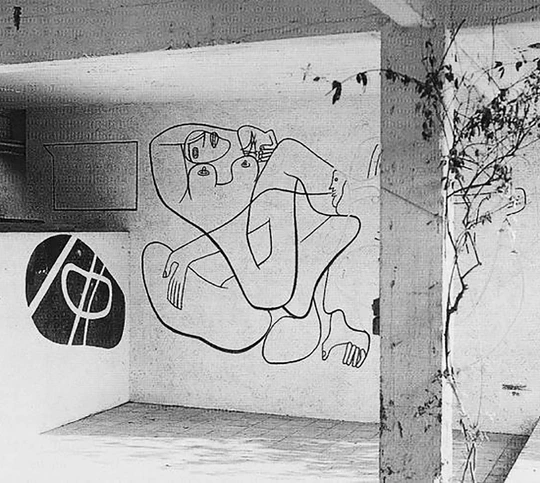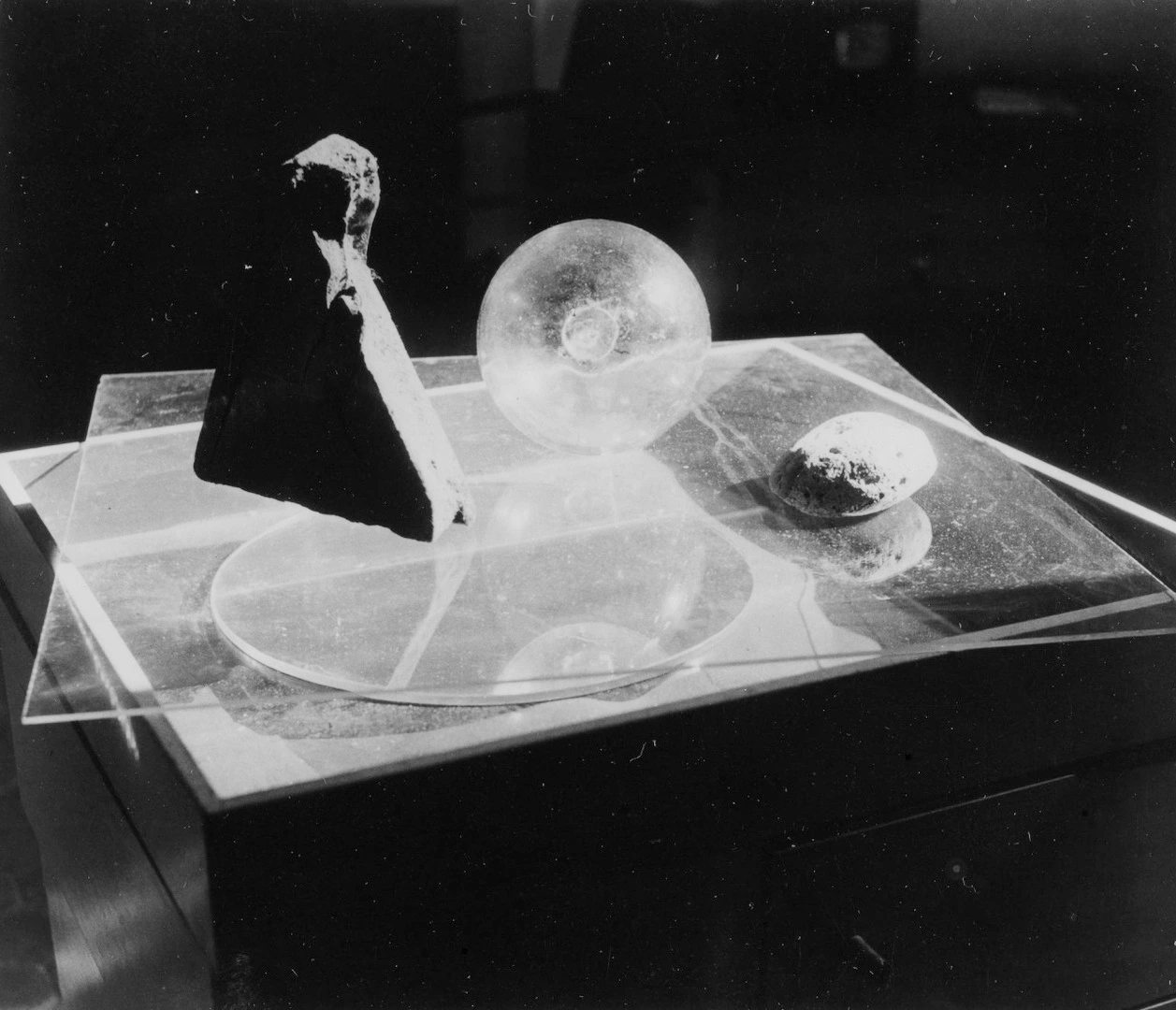сontroversy with
le corbusier
Gray and Badovici split in 1931. E-1027 remained with Badovici while Gray built herself a new villa: Tempe a païa. She explicitly stated that she wanted the walls of E-1027 to remain permanently white. This lead to controversy when Le Corbusier, a friend of Badovici, visited E-1027 in 1938 and, without receiving permission, painted eight cubist murals on its walls. Some of them contained sexual images alluding to Gray, and photos revealed that Le Corbusier had painted her naked. Gray declared it an act of vandalism and male chauvinism, while Le Corbusier claimed he was merely joking.
However, for Le Corbusier, the murals and E-1027 likely weren’t simply a joke. He was obsessed with E-1027 throughout the rest of his life. Le Corbusier tried to purchase the house many times and added extra imagery to some of the murals when he could—even as late as 1962. After his efforts failed, he built himself a small summer house adjacent to E-1027 called Cabanon. Le Corbusier eventually died of a heart attack in 1965 while swimming in front of E-1027.



